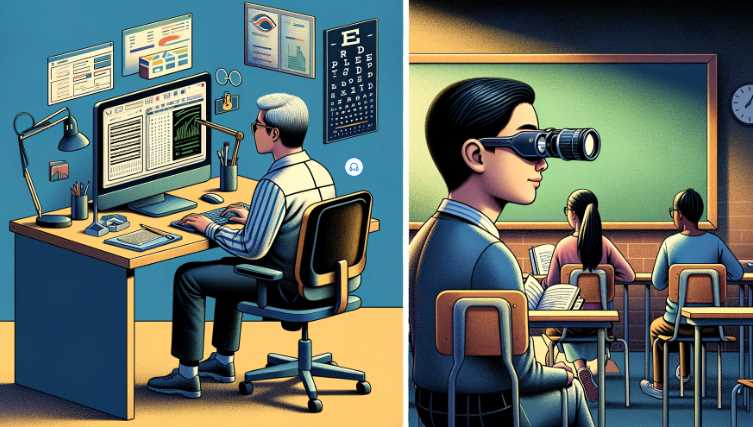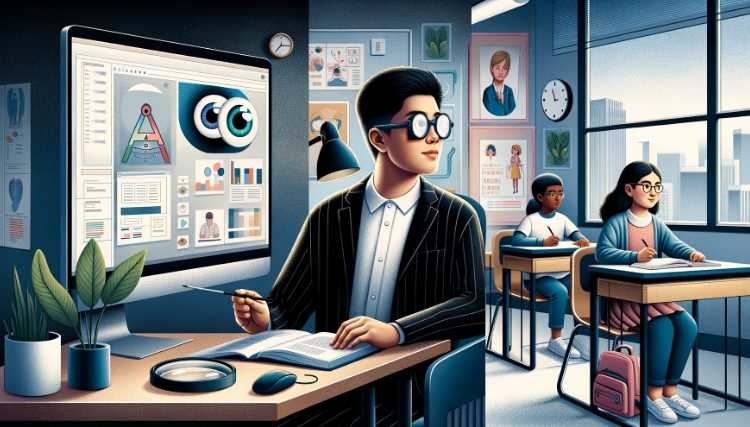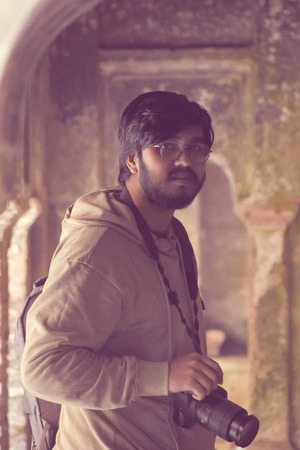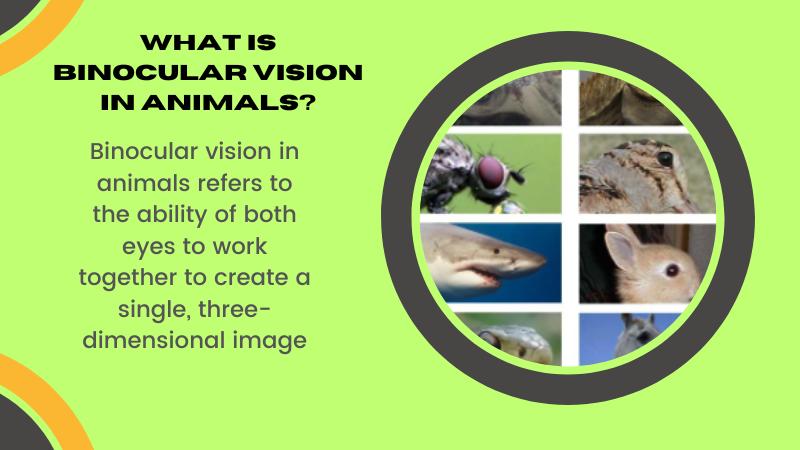As a dedicated photographer, I have always relied on my keen sense of vision to capture the world through my lens with precision and clarity. However, my journey took an unexpected turn when I found myself grappling with binocular vision disorder, a condition that disrupted the harmony between my eyes and hindered my ability to perceive depth accurately. Faced with the challenge of aligning my visual axes and restoring binocular vision, I embarked on a personal quest to find effective solutions within the realm of visual therapy and specialized exercises. Drawing upon my photographic expertise, I delved into the intricate mechanics of binocular vision, exploring techniques to recalibrate eye coordination and enhance stereoscopic vision.
This journey not only heightened my understanding of the intricate interplay between the eyes but also equipped me with invaluable insights into remedying binocular vision disorders. In this exploration, I discovered practical strategies, exercises, and visual training methods that not only benefited my own vision but also ignited a passion to share this knowledge with others facing similar challenges. Through this introduction, I aim to shed light on the intersection of photography and visual rehabilitation, offering a unique perspective on overcoming binocular vision disorder based on my firsthand experiences in both realms.
Understanding Binocular Vision Disorder

Definition and Types of Binocular Vision Disorders
Binocular Vision Disorder encompasses various conditions that disrupt the harmonious collaboration of both eyes. Each type presents unique challenges, and understanding them is crucial for effective treatment.
- Convergence Insufficiency: This occurs when the eyes struggle to work together while focusing on close objects. As someone who has battled with this type, I can attest to the strain it places on daily activities, especially reading or working on a computer.
- Divergence Insufficiency: On the flip side, divergence insufficiency makes it challenging for the eyes to diverge or move outward. This can affect tasks requiring spatial awareness and can lead to discomfort during activities like driving.
- Convergence Excess: In contrast, convergence excess involves the eyes overcompensating when focusing on nearby objects. This often results in eye strain and fatigue, affecting not only productivity but also enjoyment of leisure activities.
- Other Common BVD Types: Beyond the three mentioned, several other types of BVD exist, each with its unique set of challenges. From vertical heterophoria to accommodative insufficiency, a comprehensive understanding of these types is vital for effective diagnosis and treatment.
Symptoms and Signs of Binocular Vision Disorder
Recognizing the symptoms and signs of BVD is the first step towards seeking proper assistance and improving one’s quality of life.
- Double Vision: Experience a world where objects duplicate, making simple tasks like driving or reading a challenging endeavor. Double vision is a hallmark of BVD, indicating a misalignment that needs attention.
- Eye Strain: As someone who has faced the persistent discomfort of eye strain, I can attest to its impact on daily activities. Prolonged periods of reading or screen time can exacerbate this symptom, affecting both work and leisure.
- Headaches: The strain on eye muscles and the brain’s attempt to reconcile conflicting visual information often lead to headaches. These headaches can range from mild discomfort to debilitating pain, making it imperative to address the root cause.
- Reading Difficulties: Imagine trying to read a book, only to find the words swimming on the page. Reading difficulties are a common manifestation of BVD, impacting academic and professional pursuits.
- Blurred Vision: The inability of the eyes to work in harmony can result in blurred vision. This symptom, often exacerbated by fatigue, makes tasks requiring visual precision challenging and frustrating.
Diagnosing Binocular Vision Disorder
Eye Examination and Diagnostic Procedures
Diagnosing Binocular Vision Disorder involves a comprehensive eye examination, where specific procedures are employed to identify and understand the nature of the disorder.
| Diagnostic Procedure | Purpose |
|---|---|
| Cover Test | Assesses eye alignment at various distances. |
| Near Point of Convergence | Determines the closest point the eyes can focus without double vision. |
| Stereopsis Testing | Measures the eyes’ ability to perceive depth. |
| Refraction Assessment | Identifies the need for corrective lenses. |
| Eye Movement Testing | Evaluates how well the eyes follow a moving object. |
These diagnostic procedures provide a detailed picture of how the eyes function individually and together. As someone who has undergone these tests, I can emphasize their importance in tailoring a treatment plan that addresses specific BVD challenges.
Role of Optometrists and Ophthalmologists
Optometrists and ophthalmologists play pivotal roles in the diagnosis of Binocular Vision Disorder. Optometrists, with their expertise in vision care, conduct thorough eye examinations, utilizing specialized tests to pinpoint BVD. They often prescribe corrective lenses and vision therapy exercises.
Ophthalmologists, as medical doctors specializing in eye care, bring a broader medical perspective. They can identify and treat underlying health issues contributing to BVD. Collaboration between these professionals ensures a comprehensive approach to diagnosis and treatment.
In my experience, consulting both optometrists and ophthalmologists provided a well-rounded understanding of my condition, leading to a more effective treatment plan.
Importance of Early Detection

Early detection of Binocular Vision Disorder is paramount for successful intervention. As someone who faced challenges due to delayed diagnosis, I understand the impact it can have on daily life. Timely identification allows for the implementation of targeted treatments, reducing the risk of long-term complications. Routine eye examinations, especially for children and those experiencing visual discomfort, are crucial. Investing in regular check-ups ensures that any emerging issues, including BVD, are identified early, paving the way for a smoother path to recovery.
Treatment Options for Binocular Vision Disorder
When it comes to treating Binocular Vision Disorder (BVD), various options cater to the specific needs of individuals. Let’s explore these treatments in detail.
Vision Therapy
Vision therapy is a structured program designed to improve the coordination between the eyes and enhance visual processing. As someone who has undergone vision therapy, I can attest to its effectiveness in addressing BVD challenges.
1. Definition and Goals
Vision therapy aims to correct specific vision problems through a series of exercises and activities. The primary goals include improving eye movement control, enhancing coordination, and promoting the brain’s ability to process visual information accurately.
2. Types of Vision Therapy Exercises
| Type of Exercise | Purpose |
|---|---|
| Eye Tracking | Improves the ability to follow moving objects. |
| Convergence Exercises | Strengthens the eyes’ ability to work together. |
| Focusing Exercises | Enhances the eyes’ ability to change focus. |
| Stereogram Activities | Develops depth perception. |
Vision therapy exercises are tailored to address the specific issues identified during the diagnostic phase, providing a personalized approach to treatment.
3. Duration and Frequency
The duration of vision therapy varies based on the severity of BVD and individual progress. Typically, sessions may last several weeks to months, with exercises performed both in-office and at home. Consistency is key, and regular follow-ups with the eye care professional ensure adjustments to the treatment plan as needed.
Prism Glasses and Corrective Lenses
1. Prescribing Prism Glasses
Prism glasses are optical devices that alter the way light enters the eyes, assisting in aligning images correctly. For those with BVD, prism glasses can be prescribed to alleviate symptoms like double vision and eye strain. As someone who has benefited from prism glasses, I can attest to their immediate impact on visual comfort.
2. Choosing the Right Corrective Lenses
Selecting the appropriate corrective lenses is crucial in managing BVD. Whether it’s addressing nearsightedness, farsightedness, or astigmatism, customized lenses cater to the specific needs of each individual. Consultation with an optometrist ensures the correct prescription and lens type, optimizing visual clarity and comfort.
Surgical Interventions
1. When Surgery Is Considered
Surgery is considered for specific cases of BVD that do not respond adequately to non-invasive treatments. Strabismus surgery, for instance, may be recommended to correct misalignments of the eyes. However, surgical intervention is typically reserved for severe cases where other methods prove insufficient.
2. Risks and Benefits
As with any surgical procedure, there are associated risks and benefits. Risks may include infection, changes in vision, or the need for follow-up surgeries. The decision to pursue surgical intervention should be made in consultation with a qualified ophthalmologist, weighing the potential benefits against the risks.
Lifestyle Changes and Home Remedies

Adopting eye-friendly practices and incorporating nutritional support into your daily routine can significantly complement formal treatments for Binocular Vision Disorder (BVD). Let’s delve into practical strategies that can enhance your overall visual health.
Eye-Friendly Practices for Everyday Life
Incorporating simple yet effective practices into your daily routine can alleviate the symptoms of BVD and contribute to long-term eye health.
1. Proper Lighting
Ensuring adequate lighting in your workspace and living areas is crucial. Positioning light sources behind you and using anti-glare screens can minimize eye strain. I have personally experienced the relief that comes with adjusting lighting conditions, making extended reading or screen time more comfortable.
2. Regular Breaks from Screen Time
As someone who spent significant hours in front of screens, taking regular breaks proved transformative. Follow the 20-20-20 rule – every 20 minutes, look at something 20 feet away for at least 20 seconds. This simple habit prevents eye fatigue and supports better focus.
3. Eye Exercises
Incorporating targeted eye exercises into your routine can enhance eye coordination. From simple pencil push-ups to focusing on near and distant objects, these exercises, when performed consistently, contribute to improved visual function. These exercises are like a gym workout for your eyes, strengthening the muscles that are crucial for binocular vision.
Nutritional Support for Eye Health
Maintaining a well-balanced diet not only supports overall health but also plays a role in promoting optimal eye function.
1. Importance of a Balanced Diet
A diet rich in vitamins, minerals, and antioxidants is essential for eye health. Including a variety of fruits, vegetables, whole grains, and lean proteins provides the nutrients necessary for maintaining the health of the eyes. As someone who has adjusted my diet to include more eye-friendly foods, I’ve noticed positive changes in my overall vision.
2. Specific Nutrients Beneficial for Vision
| Nutrient | Role in Eye Health |
|---|---|
| Vitamin A | Essential for maintaining clear vision. |
| Vitamin C | Supports blood vessels in the eyes. |
| Omega-3 Fatty Acids | Contribute to overall eye health. |
| Lutein and Zeaxanthin | Found in leafy greens, protect against age-related macular degeneration. |
Supplementing your diet with these nutrients or incorporating foods rich in them can contribute to maintaining optimal vision and supporting the treatment of BVD.
Tips for Managing Binocular Vision Disorder at Work and School
Effectively managing Binocular Vision Disorder (BVD) in different settings requires thoughtful adjustments to your environment and communication with relevant stakeholders. Here are practical tips for navigating work and school with BVD.
Workplace Ergonomics for BVD
Creating a BVD-friendly workspace is essential for maintaining comfort and productivity during work hours.
1. Proper Desk Setup
| Element | Importance |
|---|---|
| Chair and Desk Height | Align with the computer screen for optimal viewing. |
| Workspace Lighting | Ensure even illumination, minimizing glare and reflections. |
| Document Placement | Position documents at eye level to reduce strain. |
A well-organized desk setup reduces eye strain and discomfort. Personally, I’ve found that adjusting my desk to ensure proper alignment significantly improves my work experience.
2. Adjusting Monitor Position
| Monitor Position | Guidelines |
|---|---|
| Eye Level Alignment | Center the screen at eye level to avoid neck strain. |
| Anti-Glare Filters | Attach anti-glare filters to minimize screen glare. |
Simple adjustments to the monitor position and incorporating anti-glare measures make a significant difference for individuals with BVD, fostering a more comfortable and visually friendly work environment.
School Strategies for Children with BVD
Navigating school with BVD requires collaboration between parents, teachers, and the child.
1. Communication with Teachers
Open and ongoing communication with teachers is crucial. Inform them about your child’s BVD diagnosis, specific challenges, and recommended accommodations. Regular updates on your child’s progress and any changes in their condition help teachers tailor their approach to support the child’s learning experience.
2. Providing Necessary Accommodations
| Accommodation | Purpose |
|---|---|
| Seating Arrangements | Place the child in a location that minimizes visual distractions. |
| Extra Time for Tasks | Allow additional time for assignments or tests. |
| Use of Visual Aids | Incorporate visual aids to aid learning. |
Ensuring that teachers are aware of the child’s needs and providing necessary accommodations fosters a supportive learning environment. Personalized approaches to education can significantly enhance a child’s academic experience despite BVD challenges.
Preventing Binocular Vision Disorder
Prevention is always preferable to treatment, and when it comes to Binocular Vision Disorder (BVD), establishing proactive habits can contribute to maintaining optimal eye health.
A. Importance of Regular Eye Checkups
Regular eye checkups are the cornerstone of preventive eye care. Even if you don’t currently experience vision problems, routine visits to an optometrist can detect potential issues early on, preventing the development of conditions like BVD. As someone who experienced the benefits of early detection, I cannot stress enough the importance of scheduling regular eye examinations. Timely identification allows for prompt intervention, reducing the risk of complications and ensuring that your eyes function at their best.
B. Eye Health Habits for Preventing BVD
In addition to regular eye checkups, adopting healthy habits can play a pivotal role in preventing Binocular Vision Disorder.
- Balanced Screen Time: Limit prolonged exposure to digital screens, taking regular breaks to rest your eyes.
- Outdoor Activities: Spend time outdoors to promote overall eye health and reduce the risk of myopia.
- Proper Lighting: Ensure well-lit spaces for reading and working, minimizing eye strain.
- Hydration: Stay adequately hydrated to support overall eye function and prevent dry eyes.
1. What is Binocular Vision Disorder, and How Does It Affect Photographers?
Binocular vision disorder refers to a condition where the eyes struggle to work together, disrupting depth perception and visual coordination. As a photographer, this can significantly impact your ability to capture scenes accurately. The condition might manifest as eye strain, headaches, or difficulty focusing, affecting the overall quality of your work.
2. Can Binocular Vision Disorder Be Improved Without Medical Intervention?
Yes, there are non-invasive methods to address binocular vision disorder. Visual therapy exercises and specialized techniques can be employed to strengthen eye muscles, improve coordination, and promote healthier binocular vision. These approaches, often developed by optometrists and vision therapists, can be integrated into a photographer’s routine to enhance their visual capabilities.
3. How Can Photography Techniques Aid in Binocular Vision Rehabilitation?
Photographers, accustomed to fine-tuning their visual skills, can leverage their craft to combat binocular vision disorder. Techniques such as converging lines, depth of field manipulation, and focusing exercises can be incorporated into daily photography practices, serving as both a therapeutic and creative endeavor.
4. Are There Specific Eye Exercises for Binocular Vision Disorder Recovery?
Indeed, targeted eye exercises play a pivotal role in recovering from binocular vision disorder. Pursuing activities that encourage eye movement, convergence, and divergence can gradually retrain the eyes to work together seamlessly. Incorporating these exercises into a daily routine can yield positive results over time.
5. How Does Screen Time Impact Binocular Vision, and What Can Photographers Do to Minimize Its Effects?
Excessive screen time is known to contribute to binocular vision issues. Photographers, often spending extended hours editing and reviewing images on screens, can mitigate these effects by adopting the 20-20-20 rule—taking a 20-second break every 20 minutes, focusing on an object 20 feet away. This simple practice helps reduce eye strain and promotes healthier vision.
6. Can Binocular Vision Disorder Be Aggravated by Poor Lighting Conditions?
Photographers working in suboptimal lighting conditions may experience exacerbated symptoms of binocular vision disorder. Ensuring well-lit environments and using appropriate lighting techniques not only enhances photographic outcomes but also contributes to alleviating eye strain and discomfort associated with the condition.
7. Is it Advisable to Seek Professional Help for Binocular Vision Disorder, and What Specialists Should Photographers Consult?
Consulting with eye care professionals, such as optometrists or vision therapists, is highly advisable. These specialists can conduct comprehensive assessments, diagnose specific issues, and prescribe tailored visual therapy. Photographers should seek professionals experienced in working with visual conditions to ensure a customized and effective treatment plan.
8. Can Lifestyle Changes Contribute to Binocular Vision Disorder Improvement?
Adopting a healthy lifestyle can positively impact binocular vision. Factors such as adequate sleep, a balanced diet rich in eye-friendly nutrients, and regular exercise can contribute to overall eye health. Photographers should prioritize these lifestyle changes to complement their efforts in addressing binocular vision disorder.
9. Are there Recommended Visual Habits for Photographers to Prevent Binocular Vision Issues?
Developing mindful visual habits is crucial for preventing and managing binocular vision disorders. Techniques such as proper posture, conscious blinking, and regular eye breaks during extended photography sessions can aid in maintaining optimal eye health.
10. How Long Does It Typically Take to See Improvement in Binocular Vision Disorder Symptoms?
The timeline for improvement varies from person to person. Consistency in practicing prescribed exercises, incorporating lifestyle changes, and seeking professional guidance all contribute to the speed of recovery. Photographers should remain patient and committed to the rehabilitation process for sustained and meaningful results.
Resources and References
Articles:
- “Vision Therapy: What It Is and Who Needs It” (American Optometric Association): A comprehensive guide to understanding vision therapy and its applications.
- “Binocular Vision Disorders: The Role of Vision Therapy” (Optometry and Vision Science): A scientific perspective on the effectiveness of vision therapy in managing binocular vision disorders.
Websites:
- Vision Therapy Success Stories: An online platform featuring real-life experiences of individuals who have undergone vision therapy for various vision disorders, including BVD.
- National Eye Institute (NEI): The NEI provides a wealth of information on various eye conditions and the latest research in the field of ophthalmology.
Organizations:
- College of Optometrists in Vision Development (COVD): A professional organization that focuses on developmental vision and vision therapy.
- American Academy of Ophthalmology (AAO): A leading authority on eye care and ophthalmic research, offering comprehensive information on various eye conditions.

Fahim Foysal is a well-known expert in the field of binoculars, with a passion for exploring the great outdoors and observing nature up close. With years of experience in the field, Fahim has honed his skills as a binocular user and has become a go-to resource for those seeking advice on choosing the right binoculars for their needs.
Fahim’s love for the natural world began during his time at The Millennium Stars School and College and BIAM Laboratory School, where he spent much of his free time exploring the outdoors and observing the wildlife around him. This passion for nature led him to pursue a degree in Fine Arts from the University of Dhaka, where he gained a deep understanding of the importance of observation and attention to detail.
Throughout his career, Fahim has used his expertise in binoculars to help others discover the beauty of the natural world. His extensive knowledge of binocular technology and optics has made him a trusted advisor for amateur and professional wildlife observers alike. Whether you’re looking to spot rare birds or observe animals in their natural habitats, Fahim can help you choose the perfect binoculars for your needs. With his guidance, you’ll be able to explore the outdoors with a newfound appreciation for the beauty of the natural world.
Last update on 2025-10-13 / Affiliate links / Images from Amazon Product Advertising API
Table of Contents




Pingback: The Wonders of Binocular Vision: A Journey into Seeing Depth and Dimension
Pingback: Can binocular vision dysfunction happen suddenly?